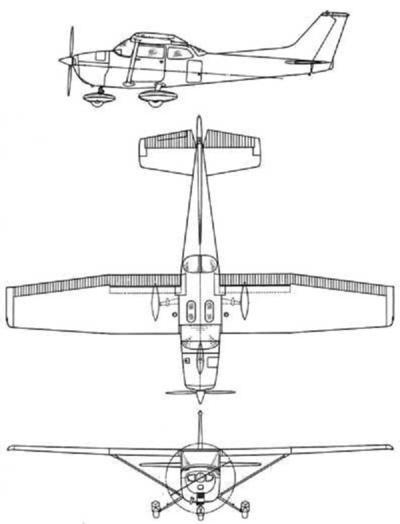Pilot Perishes in North-Idaho Mishap
The NTSB has released its preliminary report on a 06 July 2023 accident in which a Cessna 182N, registration N703Z, was substantially damaged and its pilot (and sole occupant) was killed shortly after departing St. Maries, Idaho’s Jack A. Buell Airport (S72).

The accident aircraft was operated as a personal flight under Part 91 of the Federal Aviation Regulations.
The 182N and its pilot were reportedly bound for Puyallup, Washington—a town some 26-nautical-miles south of Seattle. Numerous witnesses reported observing smoke emitting from the accident aircraft’s engine compartment immediately after it departed S72. Witnesses further reported hearing the engine sputtering and, shortly thereafter, observed the aircraft turn and descend, nose-low, into terrain.
A review of recorded Automatic Dependent Surveillance-Broadcast (ADS-B) data indicated the accident-aircraft departed S72’s Runway 10 at approximately 09:16 PDT. The data showed the 182N remained on runway heading for 38 seconds after departing the airport—after which time the ADS-B signal was lost.
The last ADS-B target, recorded at 09:17 PDT, indicated the aircraft was at an altitude of two-hundred-feet AGL at a ground-speed of 67-knots. The 182N impacted terrain 1,320-feet east of the last recorded ADS-B target.
A security camera located east of the departure runway captured video footage of the accident sequence—review of which showed the accident-aircraft in a left-wing-low, near-vertical descent immediately prior to impact.
An audio recording of the S72 Common Traffic Advisory Frequency (CTAF) captured the pilot’s departure radio transmissions, which were unremarkable excepting his declaring “failure” shortly after takeoff.
The accident-aircraft descended precipitously in a nose-down attitude, impacting a hayfield some 2,350-feet from the departure end of S72’s runway 10, coming to rest on an approximate magnetic-heading of 252-degrees.

All major components of the Cessna 182N remained within the immediate vicinity of the main wreckage. The aircraft sustained extensive impact damage with aft crush deformation to the leading edges of both wings—which remained partially attached to the fuselage. The airplane’s empennage separated from the fuselage at a point near the aft baggage area, and was discovered folded downward over the right wing.
Post-accident examination of the Cessna 182N’s engine revealed mechanical damage to the number-three cylinder. Further examination revealed subject cylinder’s exhaust valve head had separated from the valve stem, which remained in the exhaust valve guide. The piston had separated and was lying, damaged, within the cylinder barrel. Metal fragments were discovered in the engine’s oil sump, and the remaining cylinder piston skirts exhibited varying degrees of mechanical damage. The number-three cylinder connecting rod was bent forward.
The engine monitoring device and cylinder components were retained for further examination.
Parties seeking further information pertaining to the described occurrence should reference NTSB Accident Number WPR23FA256.
 ANN's Daily Aero-Linx (08.27.25)
ANN's Daily Aero-Linx (08.27.25) ANN's Daily Aero-Term (08.27.25): Class C Service
ANN's Daily Aero-Term (08.27.25): Class C Service ANN FAQ: Submit a News Story!
ANN FAQ: Submit a News Story! Airborne-NextGen 08.26.25: Iran UAV Knockoffs, X-37B Spaceplane, Army Training
Airborne-NextGen 08.26.25: Iran UAV Knockoffs, X-37B Spaceplane, Army Training Classic Klyde Morris (08.25.25)
Classic Klyde Morris (08.25.25)




